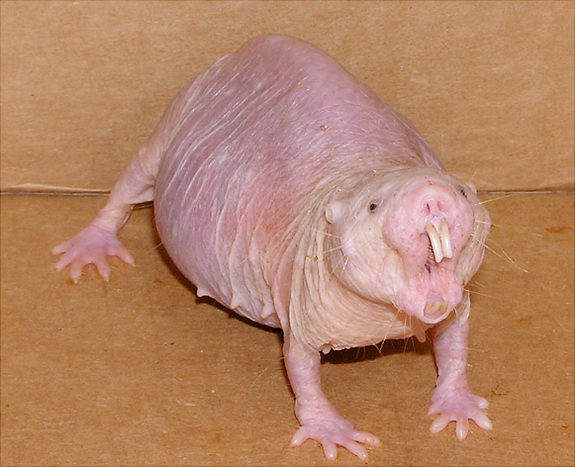Recent work suggests that naked mole-rats are highly durable, resistant to many diseases, and seemingly live without ageing.
The naked mole-rat has stood out to scientists for some time, as they have a lifespan of over 30 years – 5 times greater than would normally be expected for a rodent of their size.
In the last few decades researchers have begun investigating these curious creatures and, along with many other intriguing findings, have found that diseases associated with ageing such as cancers are very rare, and that – unlike other mammals – they maintain bone, heart, and metabolic heath well into old age.
However, much of this work has been on small numbers of naked mole-rats, meaning these findings couldn’t be asserted for sure – it may just be an anomaly due to the small sample size.
Scientists from Calico labs, San Francisco, a Google founded research and development company which seeks to understand the biology of ageing and thus combat ageing and related diseases, decided to test these ideas with a large, and high quality, sample size of 3299.
Once the scientists had managed to gather data on the lifespan of these creatures, they combined their data sets and drew a survival graph, which is where their data began to shed light on these impressive creatures.
Unlike other mammals, the risk of mortality of a naked mole-rats did not increase with age.
Gompertz’s law, also known as the law of death, states that death rates exponentially increase with age. This is certainly true of the vast majority of species studies but is seemingly defied by naked mole-rats.
This puts the naked mole-rat in a unique category of rodents as well as mammals in general.
These results also suggest that the maximal life span of a naked mole-rat is far higher than the 30-year mark currently thought of as the maximum.
Why is this important?
Ageing is a major 21st century public health crisis: 40% of the 2016 NHS budget is spent on over 65s, and the number of people in Britain over 65 is expected to increase by 20% by 2025.
This burden can’t be ignored, as the need for care will increase and so will the strain on the NHS budget. Unless ageing is understood, the disabilities and co-morbidities associated with ageing threaten to overwhelm health services in the UK.
Scientists studying ageing so far have relied on studying natural ageing in humans, immortalised cancer cell lines (which are not fantastic models) and health conditions where ageing is accelerated.
Optimistic scientists may even have looked into studying the immortal jellyfish, but this is an incredibly poor model for understanding human ageing due to the numerous biological differences between mammals and jellyfish.
Now, however, that scientists have identified a species of rodent which seemingly defies the laws of ageing influenced death rates, a potential avenue has been identified through which the biology of ageing in mammals can be better understood.
These creatures can survive 18 minutes without oxygen, have a very high resistance to tumours, and defy the laws of ageing-related death. They’re certainly a species to study further!
Image credit: Jedimentat44 via flickr

